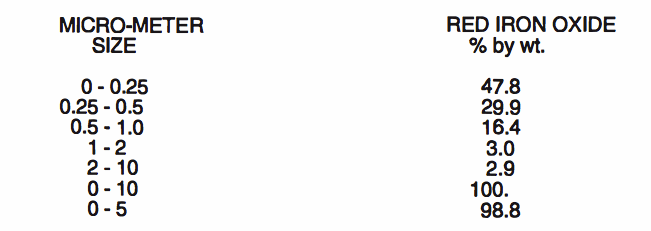
No.3 THE SUMP - PART II MARCH 1975 -Revised November 1996)
In GamGram No. 2, we explained how large dirt particles get into a filter separator sump without going through the coalescer. In this issue, we talk about very small particles that go through the coalescer.
How many times have you opened a filter separator and found a fine film of dirt all over the sump? In a horizontal vessel, the film may extend half way up on the sides. In most cases, it comes o easily with a rag. The particles are far too small to see individual ones they are really super-fine! Your filter membrane tests have been consistently acceptable and there have been no unusual situations, except an occasional bit of water - but the outlet fuel has been dry. Yet there is enough dirt on the walls of the filter tank to make thousands of bad membranes - and that dirt is downstream of the coalescer - and the coalescers are the filters. How can this happen?
The answer is dirty water. Dirt came through the coalescer in the water. The water drops settled and clung to surfaces of the vessel shell or the sump walls. Then these extremely fine particles of dirt settled inside of each water drop until they contacted and attached themselves to the epoxy lining in the filter tank. The water was either drained away or it may have dissolved back into the fuel. You say the coalescer was at fault because the dirt came through? Wrong - the coalescer did its job just fine. What really counts is whether or not the fuel was clean.
To appreciate what a fantastic device a coalescer element really is, you should visit a filter separator testing laboratory someday and watch a qualification test. They use a "test dirt " known as red iron oxide and the particles are scientifically graded as shown in the chart. Note that 47% is under micro-meters or less than 0.00001 inches. (that is 1 one-hundred thousandth or 10 millionths of an inch)! Incredible!

A coalescer does not actually strain these small particles out of the fuel. Instead, small clusters of particles gather together; the clump is then retained in the coalescer. A test proceeds with a gradual increase in pressure drop because the dirt is beginning to plug up the passages. Now, suddenly, water is injected. The coalescers go to work but the sump water turns red! The fuel remains clean and dry!
What actually is happening is that when the water comes in contact with the dirt that is already in the coalescer, it wets it and causes the clumps to break down into particles again. Instead of being in an environment of fuel and fibers, the di enters the water because the di "likes• to be water-wetted instead of fuel-we ed. The result - submicronic dirt goes through the coalescer in the water. The fuel? It remains clean!!
What should you do if you find a dirt film in a filter vessel sump? First of all, if your membrane tests have been good, don't be alarmed because it is not a hazard. However, you definitely should go back through your system to find out why you are getting water. Always clean a filter separator thoroughly when the elements are changed. Remove all of the dirt film. Sometimes it just won't come o with water or fuel and this author believes that this indicates a microorganism situation. Why? Because water drops that remain intact for any length of time can begin to grow a colony of microorganisms. The debris from this growth is much harder to clean off than ordinary dirt.
Industrial cleaners, such as trisodium phosphate, are very effective but you must scrub the surface with water after cleaning to be sure none is left in the filter. Never use steam cleaners because they almost always are contaminated with soap, a powerful surfactant that must never be used in a filter separator.
